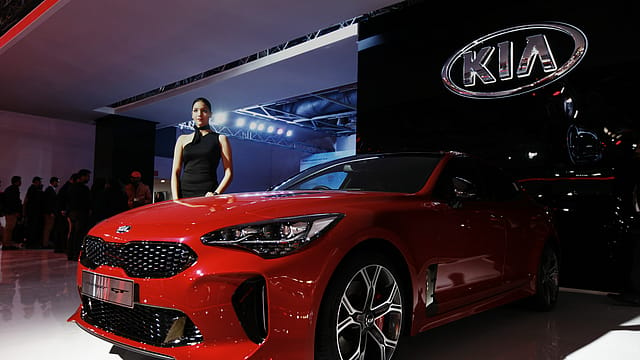Kia: The new kid on the block
ADVERTISEMENT

There is a new kid on the block. South Korean automaker Kia Motors officially entered India with a launch event at the Auto Expo in Greater Noida, near Delhi, on Wednesday. But the manufacturer, which has a presence in Europe as well, does not want to rely on the popularity of its sister company, Hyundai, in India.
In fact, asked if Kia would do well to leverage Hyundai’s network of dealers and service centres in India, Manohar Bhat, head of sales and marketing, Kia Motors India, was in denial. “I don’t know what you are talking about. Hyundai is a competitor just like any other automaker would be in the segments that we enter,” Bhat said.
Though the competitive spirit may well be the case, the affiliation of Kia and Hyundai is no secret. According to a Reuters report in August 2017, Hyundai Group chairman Chung Mong-koo holds a 6.96% in the parts affiliate Hyundai Mobis, which owns 20.78% of Hyundai Motor. The top South Korean automaker then controls 33.88% of the second-ranked Kia Motors, which in turn owns 16.88% of Hyundai Mobis.
December 2025
The annual Fortune 500 India list, the definitive compendium of corporate performance, is out. This year, the cumulative revenue of the Fortune 500 India companies has breached $2 trillion for the first time. Plus, find out which are the Best B-schools in India.
Also, sharing of resources between brands under an umbrella group is not an unused strategy in the global automotive space--Volkswagen group often shares platforms between the various brands it owns.
Perhaps it is a newcomer’s need to carve a separate identity, or the fact that the complex corporate structure has come under the radar of South Korea antitrust chief recently. Whatever be the case Kia India, as per the officials, is an altogether new entity.
Which brings us to the question: How does a new entrant introduce itself to the Indian customers? And, would the brand identity of Kia resonate with the buyers?
“India is a young country. And Kia is a youth-focussed brand, as you can see with the models that we have showcased here. This youth-focussed approach, we believe, would win over the buyers,” Bhat said.
Kia has signed an MOU with the government of Andhra Pradesh to set up a production plant in Anantapur. The first of the cars to be made there would be a compact SUV based on an India-focussed concept that Kia showcased at the Expo.
But will the cars kept at the Expo in Delhi NCR do the trick? Bhat admits to the challenge. He says the company is considering various steps so that potential buyers can experience the look and feel of the cars. Would that be as a Kia roadshow across the country? “That would depend on the number of models we have available to showcase,” he says.
Also to note, actual production of the compact SUV will only begin in 2019. Thus, Kia needs to run its awareness programmes in India for almost a year-and-half, without a car to sell.
The get-around he suggested would be making use of technology platforms to bring the cars closer to the buyers. In other words, an augmented reality or virtual reality programme.
Clearly, it is not an all-guns-blazing approach by the new entrant. But perhaps, that may be wise as foreign carmakers have not found India an easy market, and then there is the giant in the room - Maruti Suzuki. For instance, General Motors recently shuttered its operations in India.
Also, if at all the Kia global management finds the need to make some noise, they do have a car to do it: the performance-oriented Kia Stinger which the company launched in the Western markets this year to take on BMW’s M-series. Stinger, as Bhat admitted, may not sell in high numbers here--due to the cost---but could serve as a face to establish the brand capability. For now, though, Stinger will not be anything more than a crowd puller at an exhibition, and would pack its bag after the show.
